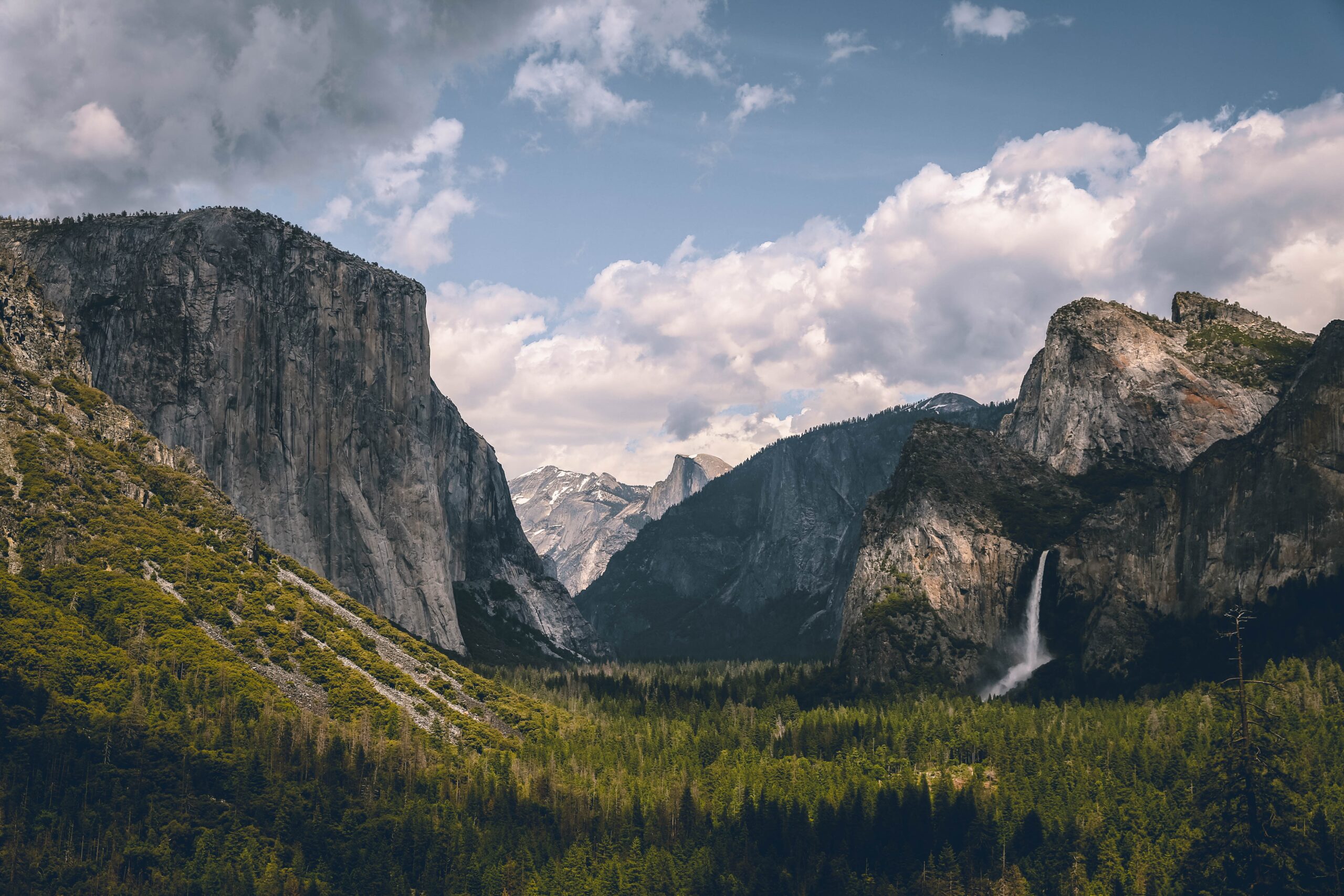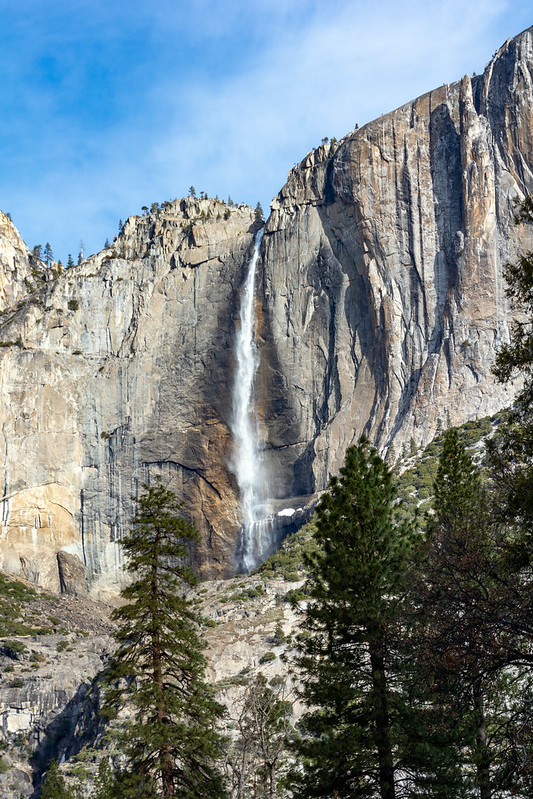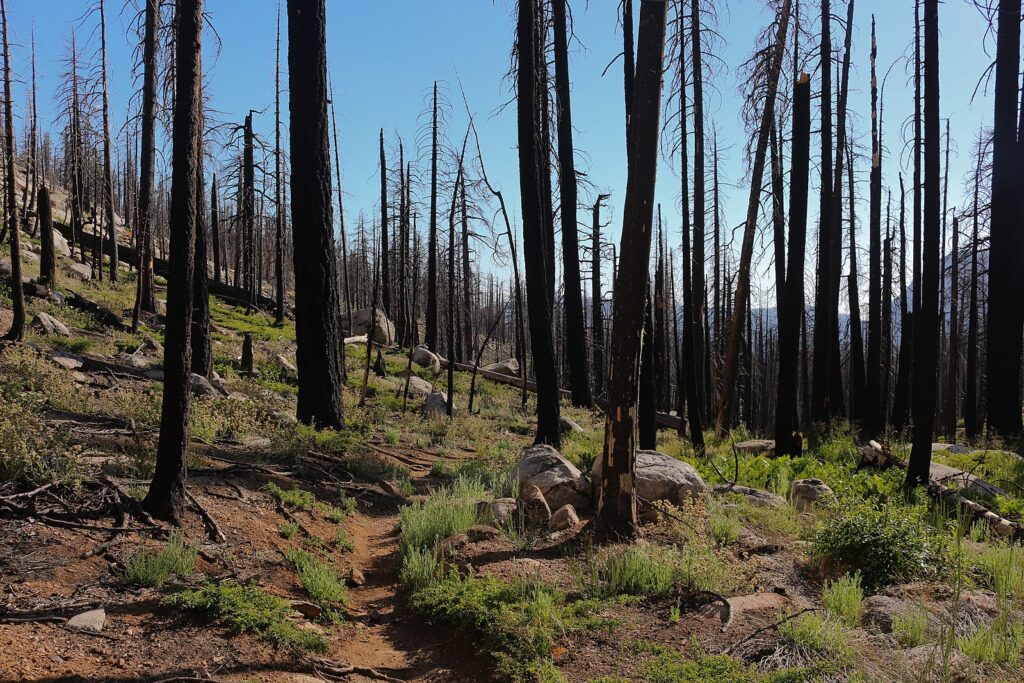
Cullen Jones/Unsplash

Cullen Jones/Unsplash
The twisted history of Yosemite National Park, intertwined with the myth of untouched wilderness and fear of fire –– and the massive institutional violence accompanying it all.
Note: This piece discusses violence and genocide against Indigenous communities.
My dad’s hands gripped the steering wheel as we drove along the winding, narrow roads of Yosemite National Park –– eyes trained ahead, he explained that though he wanted to see the scenery, he was both terrified of heights and of crashing the car. So I described to him what I saw: trees for as far as the eye could see, packed together in what my younger self thought was the perfect vision of a forest. Pure nature, I thought to myself. What an escape.

But these landscapes concealed an unsettling truth behind the park, which the U.S. National Park Service (NPS) has controlled since 1864. Tourists’ cameras now point at lands that Indigenous communities lived on and managed for thousands of years before they were forcibly removed by the government. And the densely packed trees that define their photos are live wildfire risks, evidence of the land’s changes without Indigenous tribes’ stewardship.
The park is rife with signs extolling the NPS’s conservation efforts and the achievements of John Muir (1838–1914), the “father of the National Park System” who is credited with leading the campaign to “preserve” Yosemite as a national park. But what the signs won’t tell you is that he and the NPS were active proponents of forcibly expelling Yosemite’s vital Indigenous communities, like the Ahwahneechee people.
The land the Ahwahneechee people called Ahwahnee or “big mouth”, now coined as Yosemite, was a wonder to Western settlers in the 19th century: it was an area of “broadly spaced trees, open meadows, and abundant wildlife.” When the settlers encountered the Ahwahneechee people, they failed to connect the dots between the well-tended environment they saw and the involvement of the Ahwahneechee, who practiced cultural burning to revitalize the land.
Cultural burning involves lighting small-scale burns in a specific area to promote plant and resource renewal, with the ash from the burn combining with topsoil to create a nutrient-rich soil that promotes fresh plant regrowth. These burns prompt the germination of fire-activated seeds, which play an important role in local food chains and ecosystem processes. This includes native shrubs whose berries have major cultural, medicinal, and culinary implications. Cultural burns can also be used to selectively remove invasive plants that are poorly adapted for the frequent flames of the native biome. In the context of cultural burning, the flames provide rejuvenation rather than destruction.
For the Ahwahneechee and other Indigenous communities, this “good fire” reflects “spiritual and ethical obligation to care for the land.” But to the settlers, all fire was dangerous, threatening to destroy the natural landscapes they suddenly felt an urge to “protect” –– or in other words, exploit. They used this as justification –– masking their racist and capitalist motivations –– to embark on a genocidal campaign to remove the Ahwahneechee people and their practices from the land. Throughout the mid-1800s, armed vigilantes attacked the Ahwahneechee, bolstered by laws which outlawed cultural burning and calls for a “war of extermination.” And as recently as 1969, the NPS burned down the remainder of Ahwahneechee homes, explaining this heinous action as nothing more than a “fire fighting drill.”

Under the eyes of an unsuspecting public, Yosemite Valley has continued to experience the consequences of both the removal of the Ahwahneechee and the NPS’s “fire suppression era” from 1850 to 1970. During this period, the NPS and U.S. Forest Service followed the “10 A.M. Policy,” which mandated that fires “must be contained and controlled by 10 o’clock the morning after their initial report.” However, after 1970, the NPS finally recognized that this focus on suppression drastically changed the fire regimes, or the “patterns of fire characteristics” in Yosemite, leading to deleterious effects on the lower mixed conifer vegetation there.
A 2010 study conducted by researchers at Pennsylvania State University revealed that as a result of fire suppression policies based on Muir’s philosophy, biodiversity had significantly decreased within the bounds of the park. In the absence of regular fires, flammable tree species such as the white fir crowded out shade-intolerant, fire-resistant trees like the native California black oak, which saw significant population declines. Consequently, Yosemite Valley became “two times more densely packed than it had been in the nineteenth century” –– a number which might even be higher now.
Without the sparsely-spaced trees and open vegetation that the Ahwahneechee people’s fire regime cultivated — and amidst worsening climate change –– the land has become increasingly susceptible to intense wildfires. And we have seen the results of this in real time: in 2022, the Creek Fire and Oak Fire burned tens of thousands of acres within the park.
Since 1970, the NPS has practiced prescribed burning to try and manage the landscape, which is a marked improvement in policy and has set the standard for other national parks. But prescribed burning and cultural burning are different. “Prescribed burning” refers to using intentional fire to reduce the amount of fuel, or “combustible biomass” like dead trees and brush, thereby lowering the likelihood of a wildfire occurring there.

However, it involves the compilation of large piles of vegetation gathered across maximum acreage, which burn at high temperatures and “cook the soil” (Goode et al., 2022). The intense heat damages soil microbes and therefore does not allow for a quick recovery of soil health and the plants that depend on it. In contrast, cultural burning involves a smaller accumulation of brush and is more deliberate about what is burned. This allows the ecosystem to regenerate, creating a “defensible landscape” against wildfires in the process (Goode et al., 2022). While both methods may reduce the risk of severe wildlife, cultural burning has far greater benefit for the ecosystem.
While the NPS’s turn toward prescribed burning is a start, it isn’t enough to rectify historical injustices or to promote ecosystem health in Yosemite. At present, Indigenous tribes like the Ahwahneechee are still not allowed to practice cultural burning on federal lands like Yosemite. The NPS needs to acknowledge the holistic relationship that cultural burning practitioners have with fire and the ecosystem. Furthermore, they need to recognize that the guidance of these practitioners is key to a successful and sustainable strategy moving forward.
By working in tandem, perhaps visitors to Yosemite will begin seeing landscapes characterized not by packed trees and devastating wildfires but by open meadows teeming with biodiverse life. But if the NPS fails to take steps toward building these relationships with Indigenous tribes, the lands within the park will continue to be a tinderbox waiting for a match.